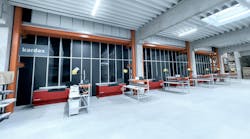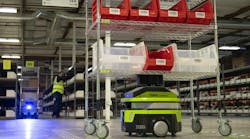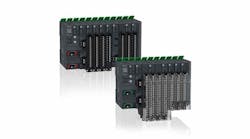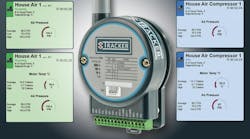Software Update Offers Better Detection
The latest and fourth release of Tebis Version 4.0 creates area curves during part comparison to enable better detection and limitation of modified areas. Design measures can thus be quickly implemented or new NC programs can be quickly calculated for modified areas. The new function creates non-overlapping shifted surfaces from any curves at defined angles. All overlaps within parts that would result especially at sharp edges and small radii of curvature are automatically filtered out and smoothed. These surfaces are ideal for separating part surfaces in mold manufacturing as well as for trim steel and trim line surfaces in draw die manufacturing.
In addition, parts can now be automatically morphed together with the most complex trimming curves in surface morphing. The geometry of the original curves is fully retained and color properties are transferred 1:1. Curves can now also be included in surface morphing, which results in benefits in draw die manufacturing, for example. If the active surfaces must be morphed to compensate for springback of the sheet, all trimming curves can be morphed, as well, to yield the geometries for a correctly trimmed sheet metal part in a single step.
Deep-hole drilling in the CAM area has been better oriented to support automated calculation and machining. There is also a new tool type with an extended set of cutting data and special speeds, feed rates, cooling types and depth sections needed for deep-hole drilling. These values can be separately managed for each individual tool. There is a new machining function that manages the special requirements of deep-hole drilling such as threading, intersections of bores or acceleration ramps. This further simplifies automated deep-hole drilling based on the drilling information stored in the part.
The definition of toolpaths has been further simplified in 5-axis milling and operating convenience of the functions has been improved. Options have been included for fast vector smoothing and for tilt-optimized calculation of toolpaths even without manual definition of vectors. When using barrel cutters, the tool contact point can now be better controlled according to the respective part situation. For these tools, which especially suitable for machining cavities, it is often better to first start with a slightly greater slope with a tool contact point that is closer to the cutter tip. The slope can then be reduced to optimize tool wear. The slope can be increased at the bottom of the pocket until the cutter tip (ball) exactly contacts the fillet between the flank and bottom. This removes the residual stock at the end of the flank.
Tebis Version 4.0 Release 4 also offers new possibilities for robotic machining. For example, additional axes in robot cells can now also be controlled as simultaneous NC axes if the robot is mounted on a positioning unit. It is important to permanently position the robot with the linear axes so that the arm is used within the optimal working area. With the new part-driven robotic machining, the robot can now guide a workpiece past a tool that is in a fixed position in the robot cell. Tebis now supports laser hardening and laser weld cladding affording an even larger range of applications.





